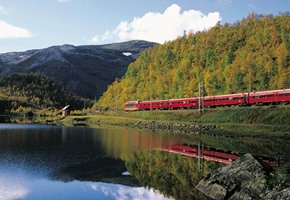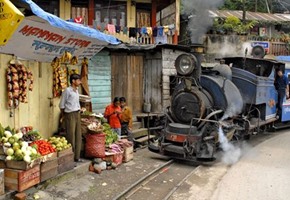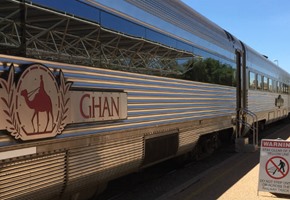Cutting a twisting iron path across the frontier of the American environs is the Baltimore and Ohio Railroad. One of the oldest lines in the United States, the route has played an integral part in shaping American history and is as cultural important now as it once was economically - a charming bastion of the Wild West and an archetypal reminder of the nation's great history.
Originally built to cross the state of Maryland, from the port-city of Baltimore westwards to Sandy Hook, the line was later extended across parts of Virginia. It then skirted the mighty Potomac River, past the famous town of Harpers Ferry before later being extended even further in both directions, to the populous cities of Chicago, in the East and New York, on the West Coast, with a further extension to the capital in Washington D.C, with this route being finished in the mid-1830s'. Being one of the earliest railroads, it was built in a time before cost-effecting and corner cutting measures had become established practices in line production - the route was built from sturdier materials and for that reason much of its bridge stonework remains. The iconic Carrollton Viaduct, the route's first bridge, still stands and is the world's oldest to still carry trains regularly.
In those early years, the B&O Line, as it became affectionately known, was one of the largest rail enterprises in the nation and caused the cities along its route to become boomtowns of capital and industry. Primarily a freight-carrier, the B&O route soon opened to passengers. It wasn't long before the operations of the railroad has become a very profitable business, with the Line becoming the first in America to boast passenger revenues, permanent stations and timetables along with miles upon miles of track and telegraph wires.
Perhaps the most famous period in the mighty B&O's history is its importance and influence during the American Civil War. During the onset of the Civil War in the 1860's, the B&O Line stood as a bastion of Union allegiance, despite being primarily located in the Confederate South state of Maryland. The B&O provided an integral route between Washington and the Northern States and was used to quickly ship supplies, ammunition and men between locations. This made it a primary target for Confederate raiders.
Harpers Ferry, the quiet town situated along the train's route past the Potomac River would soon become a primary bastion of Confederate troops and provided a starting point for Stonewall Jackson's famous raids against the route. Confederate troops destroyed 23 bridges, 102 miles of telegraph lines, 36.5 miles of track and destroyed or captured nearly 50 locomotives by the end of 1861, which caused the B&O to shut down operations in the area for almost a year, even when the services restarted they were often held up or stopped by Confederate troops.
In the later years of the war, the B&O Line had a chance to score its revenge against the armies of the Confederacy as it continued to provide a vital link to Washington and the Union's defence of the capital. It was at the Battle of Monocacy in July of 1864, where some of the Line's staff reported the movement and events they had seen when passing through the Confederate camps at Harpers Ferry. This early warning of large troop movement enabled the Union to prepare fully for the ensuing battle, with the Railroad once again providing a quick and convenient way to transport men and munitions. Though the battle was a loss for the Union troops, it delayed the Confederate advance against the capital and meant Ulysses S. Grant and his men could successfully repel the Southern raiders.
Nowadays, The Baltimore and Ohio Line makes up part of the CSX Transportation network that serves much of the American and Canadian West Coast. The B&O Line gained immortality as a Train Station square on the American version of Monopoly and still carries passengers and freight along the routes of old, albeit in much more modernised surroundings.





